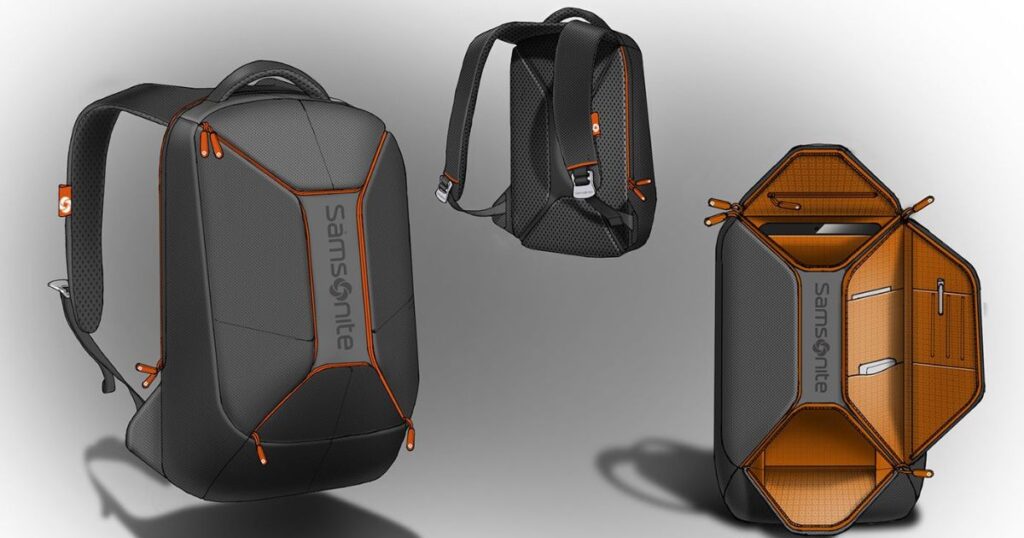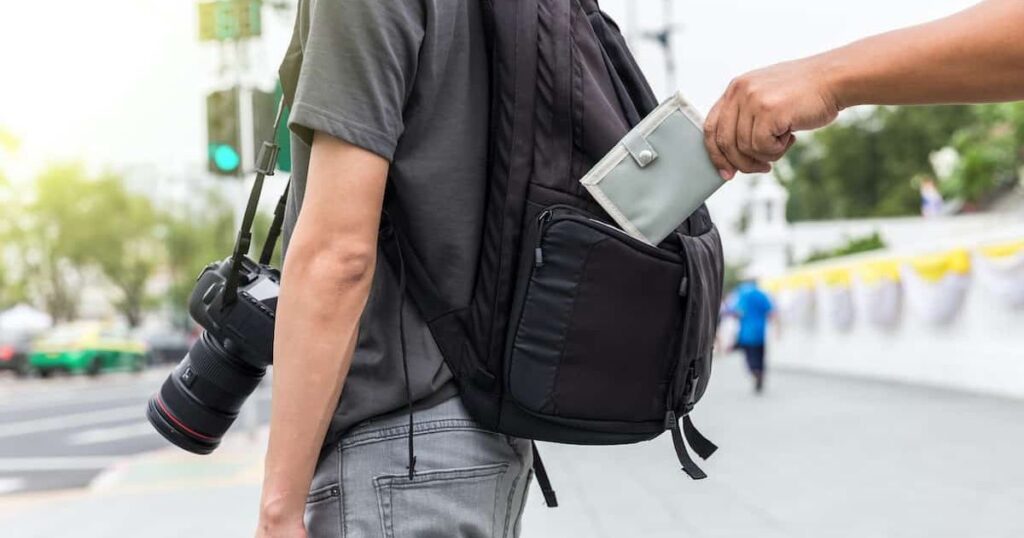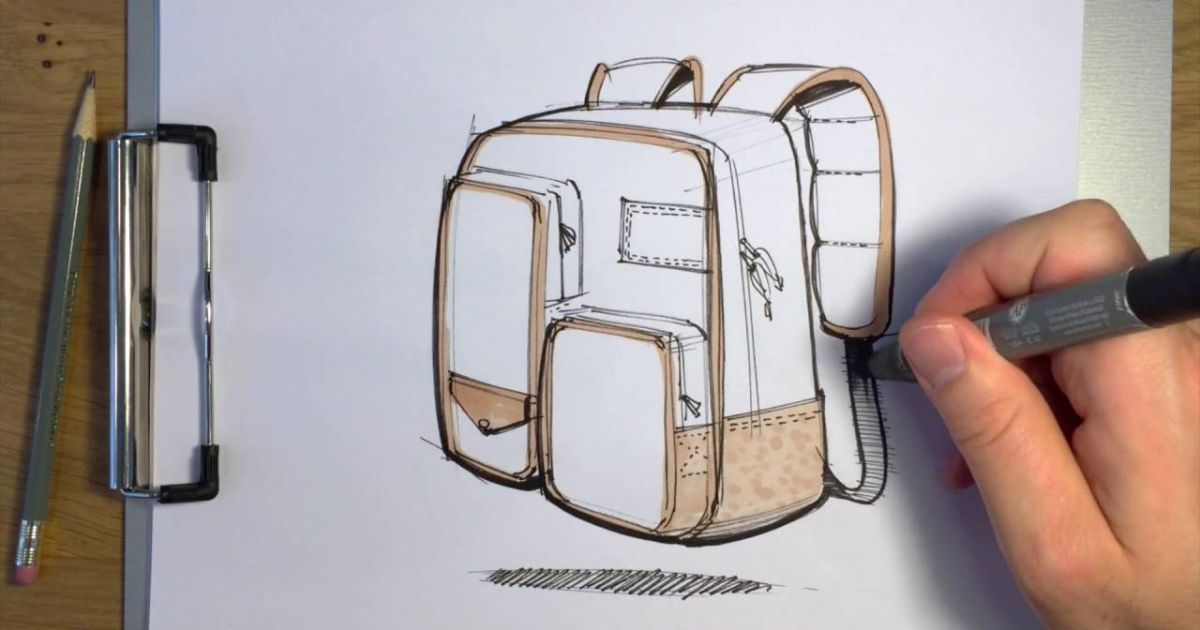When designing a backpack, some key considerations include purpose, size, compartments, and materials. Sketching ideas allows exploring various layouts, pockets and adjustable features. Measuring typical load amounts guides capacity needs.
With users in mind, a designer envisioned sections tailored for laptops, books, gym clothes and more. Customizable straps provide a great fit regardless of body type. Compartments keep essentials organized throughout busy days on the go.
External and internal pockets provide just enough space without bulk. Padding supports sensitive areas while breathable fabrics prevent overheating. Quality zippers, buckles and reinforcements ensure durability through years of adventure. Colours and prints add personality. With feedback from testing, the design evolves into the perfect backpack for any excursion.
Key Takeaways
- Consider space for a laptop, books, clothes, gear, etc. Multiple pockets aid organization.
- Padding on straps and back distributes weight evenly. Adjustable straps ensure proper fit across bodies.
- Reinforce stress points and select long-lasting fabrics/hardware for years of hard use.
- Sketches visualize form and function. Colors/prints set style while complementing occasions.
- Prototypes test capacity, comfort and construction. Feedback improves designs for ideal carrying experience. Don’t miss to read out this topic Clean Leather Backpack.
Overview Of Design A Backpack

When designing your ideal backpack, consider both form and function. Will it carry books, gadgets, clothing – what compartments are needed? Ensure padding distributes weight evenly on shoulders and backs for comfort over long periods.
Consider durability in stressful areas and changeable fabric choices. Through sketches, experiment with proportions, colors and features to perfectly suit your lifestyle and aesthetics. Gather feedback from prototypes to fine tune your tailored carrying companion for journeys ahead.
Step By Step Guide To Design A Backpack
- Draw the backpack from multiple angles with measurements. Note storage divisions, padding locations, and other key components tailored for your uses.
- Build a rough mockup using inexpensive materials to test functionality. Refine design then construct another to evaluate comfort, weight distribution, and durability under stress tests.
- Have several testers use your prototype on trials relevant to intended purposes. Note issues that arise and feedback on improvements. Incorporate others’ perspectives into tweaks before commercial production.
A Pencil And Stapler We Designed Our Backpacks
We wanted our backpacks to be highly functional, so we designed them around everyday carry essentials. Each has dedicated pockets perfectly fitted for a standard No. 2 pencil and mini stapler.
Compartments cradle items securely while allowing quick access. Students stay organized with areas for notebooks, laptops, plus storage for the tools of their trade. Whether hitting the books or heading to class, our backpacks prove form follows function.
Design A Backpack With Sewing Pattern
Creating your own unique backpack starts with the perfect sewing pattern. We developed a versatile yet detailed template to cut lightweight fabrics with precise shapes. Dual zippered pockets, adjustable straps and reinforced seams add capability.
Combined with water resistant nylon or rustic canvas, any level of sewer can construct a pack tailored for adventures near and far. With every stitch, your handmade bag takes form until finished, ready to hold all your gear in a stylishly personal way.
Make A Backpack Out Of Jeans

Old denim is reborn into a rugged backpack. Patches of worn jeans showcase memories of past wear while sturdy cotton canvas provides the foundation. The thick leather patch from rear pockets gives extra structure for a custom-molded frame.
Belt loops become durable accent straps and zippers secure necessities inside upcycled compartments. Created from repurposed material, this unique bag holds a history on its threads, carrying what’s needed for the day with lasting character.
Make A Backpack Out Of Cardboard
Where others see trash, crafty hands envisioned a pack. Corrugated cardboard was cut, creased and reinforced with tape into a shell. Thin strips became supportive straps that connect front to back.
Despite its humble material, inside pockets and folded flaps provide organization. Light as air yet sturdy enough for books, this earth-friendly creation carries the bearer with pride. Duct tape reinforced seams to withstand daily loading and hauling.
Making The Lower Strap Attachments
The lower strap attachments require precision to ensure comfort. Small loops of strong thread are sewn around the base, folded fabric edges providing structure and stretch-resistance.
Reinforced from within, the D-rings are then securely fastened, ready to evenly bear weight on shoulders. With padded backing and straps cut to adjustable length, a perfect fit will soon be found. Properly placed, these underside holders complete the design, carrying loads with balanced ease.
Preparing The Internal Laptop Pocket
To cradle precious tech, an internal partition is shaped. Velcro pads are sewn along bottom binds as impact buffers. Mesh lining the top allows access while bugs or grains are kept at bay.
Sturdy yet flexible material like Tyvek is cut to perfection, adapting snugly to varied sized devices. Fluffy fleece padding the outer walls provides a soft place to nestle within while out and about. Carefully crafted, this safe space closes discreetly with a secured zip.
Preparing The External Front Pocket

The pocket receives reinforcements where grab handles grip. Waterproof fabric is stitched for important items to stay dry in rain. Mesh netting allows small items to be stored and seen with organization.
Shiny hook and loop tape is ironed onto overlapping flaps to open and close with ease. A variety of sizes and fastenings cater to daily on-the-go needs. Now completed, this well-designed storage fits all routine essentials in easy access up front.
FAQ’s
How To Custom A Backpack?
Whether for school or travel, customizing your backpack makes it truly yours. With fabric, patches or paint, turn a plain pack into a reflection of your personal style.
Is It Hard To Make A Backpack?
With the right materials and sewing skills, creating your own backpack is absolutely possible. Though challenging, the rewarding process brings a one-of-a-kind bag perfectly suited to your needs.
How Do You Decorate A Backpack?
Iron-on vinyl letters or vibrant fabric paint allow you to showcase favorite bands or causes with flair. For a minimalist look, embroidered initials or motifs add an artful accent.
What Steps Are Involved In Making A Backpack?
Measuring, cutting, sewing – with patience and care, transforming fabric into functional form is achievable. From frame to fittings, each step completed brings the empty bag to life.
Conclusion
Whether rendering sketches on paper or creating 3D models on screens, envisioning the ideal backpack starts with innovative design. Factors like customized compartments, durable materials, and ergonomic support are carefully considered, in Design A Backpack.
Repeated prototyping and user testing helps refine every detail. Once brought to life, an original bag is crafted that exceeds expectations for carrying personal items in comfort. The backpacks that result represent the fusion of art and engineering.

BagisPack.com: Your ultimate travel companion. Explore expert travel tips, packing guides, and destination insights. Empowering adventurers with essential advice for seamless journeys around the globe.








